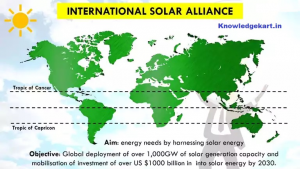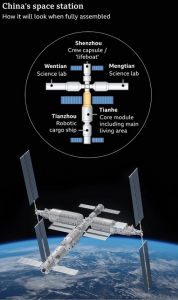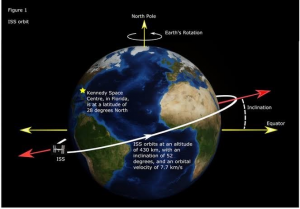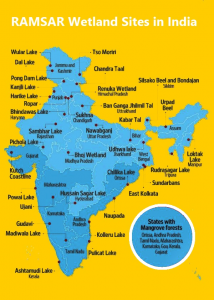Topics
- Governor and Abuse of Power
- YOUTH AND EMPLOYMENT
- Cable TV Network rules
- India and Sri Lanka
- Shenzhou-12
- Wetlands | Assam
- Governor and Abuse of Power
#GS2 #Federal structure #administration
Context: Recently, the West Bengal Chief Minister, including several MPs, have written to the President of India demanding the withdrawal of the Governor.
Key Details:
About Governor:
- A governor is a nominal head of a state, unlike the Chief Minister who is the real head of a state in India.
- According to 7th Constitutional Amendment Act 1956, the same person can be the Governor of two or more states.
- Appointment: The governors and lieutenant-governors are appointed by the president.
- It is stated that the Governor has a dual role.
- He is the constitutional head of the state, bound by the advice of his council of ministers (CoM).
- He functions as a vital link between the Union Government and the State Government.
- Governor appoints the Chief Minister and other Ministers (Article 164).
- Governor assents, withholds assent, or reserves the bill for the consideration of the President passed by the Legislative Assembly (Article 200).
- Governor may promulgate the Ordinances under certain circumstances (Article 213)
- Removal: The term of governor’s office is normally 5 years but it can be terminated earlier by: Dismissal by the president (usually on the advice of the prime minister of the country), at whose pleasure the governor holds office or Resignation by the governor. Thus, the term is subject to pleasure of the president.
- There is no provision of impeachment, as it happens for the president.
Some discretionary powers of a Governor:
- He/she can dissolve the legislative assembly if the chief minister advices him to do following a vote of no confidence. Following which, it is up to the Governor what he/ she would like to do.
- Can recommend the president about the failure of the constitutional machinery in the state.
- Can reserve a bill passed by the state legislature for president’s assent.
- Can appoint anybody as chief minister If there is no political party with a clear-cut majority in the assembly.
- Determines the amount payable by the Government of Assam, Meghalaya, Tripura and Mizoram to an autonomous Tribal District Council as royalty accruing from licenses for mineral exploration.
- Can seek information from the chief minister with regard to the administrative and legislative matters of the state.
- Can refuse to sign to an ordinary bill passed by the state legislature.
Problem with constitutional design:
- The governor is merely appointed by the president on the advice of the Central government.
- Unlike the president, a governor does not have a fixed term. He/she holds office at the pleasure of the ruling party in the centre.
- Both the manner of the appointment and the uncertainty of tenure conspire to make the incumbent an object of the Central government in politically charged circumstances.
Abuse of Power by the Centre:
- There are numerous examples of the Governor’s position being abused, usually at the behest of the ruling party at the Centre.
- The process of appointment has generally been the cause behind it.
- Puppet Rulers: Recently, the Governor of Rajasthan has been charged with the violation of the model code of conduct. His support of the central ruling party is against the spirit of non-partisanship that is expected from the person sitting on constitutional posts.
- Favouring a Particular Political Party: Governor’s discretionary powers to invite the leader of the largest party/alliance, post-election, to form the government has often been misused to favour a particular political party.
- Misuse of Power: A Governor’s recommendation for President’s Rule (Article 356) in a state has not always been based on ‘objective material’, but on political whim or fancy.
Way Forward:
- Governor’s Discretion Should Be Only Her Discretion: For the smooth functioning of government, it is equally essential that the governor must act judiciously, impartially and efficiently while exercising his discretion and personal judgment.
- Strengthening of Federalism: In order to check misuse of the office of governor, there is a need to strengthen federal setup in India.
- In this regard, the Inter-State council and the role of Rajya Sabha as the chamber of federalism must be strengthened.
- Reform the Method of Appointment of Governor: The appointment can be made from a panel prepared by the state legislature and actual appointing authority should be the Inter-state Council, not the central government.
- Code of Conduct for Governor: This ‘Code of Conduct’ should lay down certain ‘norms and principles’ which should guide the exercise of the governor’s ‘discretion’ and his powers which he is entitled to use and exercise on his judgment.
- YOUTH AND EMPLOYMENT
#GS3 #Youthempowerment #Employmentopputunities #Internationalorganisations
Context: Recently, the Ministry of Labour and Employment and UNICEF have signed a Statement of Intent to improve employment outcomes for the youth in India.
Key Details:
Purpose of this Collaboration:
- It intends to provide a platform for cooperation between the Ministry and UNICEF to leverage the existing mainstreamed initiatives of both parties in select states.
- This will co-create and implement solutions at scale to tackle the employment and skilling challenges for adolescents and youth in India, with focus on vulnerable populations.
- Vulnerable Populations include young people with special needs, youth leaving care institutions, migrant youth, victims of child labour, violence, child marriage and trafficking and like other matter.
Areas of Collaboration:
- Creating linkages with aspirational economic opportunities, that is, connecting young people with employment opportunities, including building pathways to connect them with jobs, self-employment, entrepreneurship, apprenticeships and internships. For this, innovative solutions and technology platforms will be engaged to maximize the scale and reach.
- Upskilling of young people on 21st century skills including life skills, financial skills, digital skills, vocations skills and foundational skills through online and offline channels and support them through self-learning.
- Strengthening National Career Service (NCS).
- Support in Job forecasting by exploring the gaps.
- Supporting direct dialogue and the establishment of a feedback mechanism between youth and policy stakeholders towards ensuring that schemes and programmes are consistent with young people’s priorities and aspirations
National Career Service (NCS):
- ????????National Career Service is a Five Year Mission Mode Project launched on 20th July 2015 and is being implemented by the Directorate General of Employment, Ministry of Labour & Employment.
- National Career Service (NCS) is a one-stop solution that provides a wide array of employment and career-related services to the citizens of India.
- It works towards bridging the gap between job seekers and employers, candidates seeking training and career guidance, agencies providing training and career counselling.
- Nodal Ministry: Ministry of Labour & Employment.
- Three Pillars: The NCS project reaches out to the people of this country through its three essential pillars i.e.
- A well designed ICT based portal which is NCS portal, Country wide set up of Model Career Centres and Interlinkage with all the states through employment exchanges.
UNICEF’s Initiative (YuWaah):
- The India chapter of Generation Unlimited (GenU) – YuWaah – was born in 2018.
- Generation Unlimited, called YuWaah in India, is a multi-stakeholder alliance that aims to facilitate youth to gain relevant skills for productive lives and the future of work.
- In India, by 2030, YuWaah aims to ensure, the following:
- Build pathways for 100 million young people to aspirational economic opportunities.
- Facilitate 200 million young people to gain relevant skills for productive lives and the future of work.
- Partner with 300 million young people as changemakers and create spaces for developing their leadership.
- Young people, aged between 10 to 24 years will be benefited through this initiative, and skill development and employment opportunities will be provided to them.
- Equal opportunities will be provided to both girls and boys
- People from the private sector, public organisations, international and local organisations, and government agencies have been brought together through this Generation United (GenU) to tackle with the challenge of investing in learning
- YuWaah is an initiative which will work in parallel to the India Prime Minister, Narendra Modi’s path of AtmaNirbhar Bharat Abhiyaan, aiming at creating opportunities for the people of India, with India itself.
- Its key mission is to promote access to foundational, transferable, and 21st-century skills for youth inside and outside formal education systems
Other Initiatives Taken to Improve Employability of the Youth:
- National Youth Policy-2014 provides a holistic Vision for the youth of India which is “to empower the youth of the country to achieve their full potential, and through them enable India to find its rightful place in the community of nations”.
- Prime Minister’s Employment Generation Programme (PMEGP): It was introduced in 2008 for generation of employment opportunities through establishment of micro enterprises in rural as well as urban areas. It is administered by the Ministry of Micro, Small and Medium Enterprises.
- Pradhan Mantri Mudra Yojana (PMMY): It was launched in 2015 for providing loans up to Rs. 10 lakh to the non-corporate, non-farm small/micro-enterprises. It has a focus on self-employment.
- Pradhan Mantri Rojgar ProtsahanYojana (PMRPY): It has been launched by the Ministry of Labour and Employment for incentivising employers for promoting employment generation. The Government is paying the entire employer’s contribution towards EPF and EPS for all eligible new employees for all sectors for 3 years.
- Increased public expenditure on schemes like Mahatma Gandhi National Rural Employment Guarantee Scheme (MGNREGA), Pt. Deen Dayal Upadhyaya Grameen Kaushalya Yojana (DDU-GKY) scheme run by Ministry of Rural Development and Deendayal Antyodaya Yojana- National Urban Livelihoods Mission (DAY-NULM) run by Ministry of Housing & Urban Affairs.
- Other Flagship Programmes which have the Potential to Generate Employment: Make in India, Digital India, Swachh Bharat Mission, Smart City Mission, Atal Mission for Rejuvenation and Urban Transformation, Housing for All, Industrial corridors, etc.
- Cable TV Network rules
#GS2 #Government policies and interventions #IT and Computers
Context: The Information and Broadcasting Ministry has amended the Cable Television Network Rules, 1994 regulating Cable TV networks, providing for a “statutory” mechanism for complaints raised by citizens regarding any content broadcast.
- These grievances/complaints are related to content broadcast by television channels in accordance with the provisions of the Cable Television Network Act, 1995.
Key Details:
- The notification issues Cable Television Networks (Amendment) Rules, 2021.
- It provides for a three-level grievance redressal mechanism — self-regulation by broadcasters, self-regulation by the self-regulating bodies of the broadcasters, and oversight by an Inter-Departmental Committee at the level of the Union government.
- The self-regulatory bodies for television content will be registered with the government
Procedure for grievance redressal:
- A viewer can file a complaint directly to the broadcaster, who will have to respond within 15 days.
- If the complainant is not satisfied with the response, the complaint can be escalated to the self-regulating bodies set up by TV channels, which should deal with the case in 60 days.
- If the complainant is not satisfied with the decision of the self-regulating body, he may, within 15 days of such decision, prefer an appeal to the Central Government for its consideration under the Oversight Mechanism.
- Such appeals will be dealt with by the Inter-Departmental Committee set up under the Oversight Mechanism.
- The committee will be headed by the Additional Secretary in the Ministry of Information and Broadcasting, and have members from various ministries.
Powers of the committee:
- Recommend the Centre to advise, issue a warning, censure, admonish or reprimand a broadcaster, or seek an apology.
- Ask the broadcaster to include a warning card or a disclaimer, or to delete or modify content, or take the channel or a programme off-air for a specified time period, where it is satisfied that such action is warranted.
Significance Cable Television Networks (Amendment) Rules, 2021:
- Various Self-regulatory bodies like News Broadcasters Standards Authority (NBSA) and Broadcasting Content Complaints Council (BCCC) will get statutory recognition which would be transport and benefit the citizens.
- At present, there is an institutional mechanism by way of an Inter-Ministerial Committee to address grievances of citizens relating to violation of the Programme/Advertising Codes under the Rules.
- Various broadcasters have also developed their internal self-regulatory mechanism for addressing grievances.
- The Supreme Court in its order in the matter of “Common Cause Vs Union of India & Others” while expressing satisfaction over the existing mechanism of grievance redressal set up by the Central Government, had advised to frame appropriate rules to formalize the complaint redressal mechanism.
- At present there are over 900 television channels which have been granted permission by the Ministry of Information and Broadcasting all of which are required to comply with the Programme and Advertising Code laid down under the Cable Television Network Rules.
- The recent notification is significant as it paves the way for a strong institutional system for redressing grievances while placing accountability and responsibility on the broadcasters and their self-regulating bodies.
- This will bring the television’s self-regulatory mechanism at par with that being set-up for OTT players and digital news publishers, as envisaged in the Information Technology (Intermediary Guidelines and Digital Media Ethics Code) Rules, 2021.
Cable Television Network Act, 1995:
- The law prescribes imprisonment up to two years or fine up to ?1,000 or both for the first offence, and imprisonment up to five years and with fine up to ?5,000 if any media governed under the CTN Act violates the provisions and the “Programme Code”.
- The code, which contains an elaborate list of don’ts for cable TV channels, states that no programme should be aired that contains anything obscene, defamatory, false, and suggests innuendos and half-truths.
- India and Sri Lanka
#GS2 #SoftDiplomacy #GS3 #Solarenergy #Internationalorgansiations
Context: Recently, India has signed an agreement extending a USD 100 million Line of Credit (LOC) to Sri Lanka for Solar Energy projects.
- The agreement was signed between the Government of Sri Lanka and the Export-Import (EXIM) Bank of India.
Highlights:
Significance of the LOC:
- The LOC is for a period of 20 years, with an interest of 1.75%.
- It will help finance various projects in the solar energy sector in Sri Lanka, such as rooftop solar photo-voltaic systems for households and government buildings.
- It will ensure that the country’s 70 per cent power requirements are fulfilled by renewable energy sources by 2030.
- Some of these projects were announced during the Founding Conference of the International Solar Alliance (ISA) held in March 2018 in Delhi.
- A key plan of the government is to generate solar power by obtaining the contribution of state-owned buildings, places of worship and houses of low-income families.
- Steps will also be taken to provide facilities to store solar energy in batteries for the low-income families that are unable to access the national power grid.
India’s Initiatives for Solar Energy Development:
- International Solar Alliance (ISA):
- The ISA was launched by the Prime Minister of India and the President of France in 2015 on the side-lines of the United Nations Climate Change Conference of the Parties (COP-21), with 121 solar resource rich countries lying fully or partially between the tropic of Cancer and tropic of Capricorn as prospective members.
- 89 countries have signed the ISA framework agreement.
- ISA’ vision is to enable One World, One Sun, One Grid (OSOWOG).
- One Sun, One World, One Grid (OSOWOG):
- It focuses on a framework for facilitating global cooperation, building a global ecosystem of interconnected renewable energy resources (mainly solar energy) that can be seamlessly shared.

- National Solar Mission (a part of National Action Plan on Climate Change): The aim is to establish India as a global leader in solar energy by creating the policy conditions for its deployment across the country.
- Rooftop Solar Scheme: To generate solar power by installing solar panels on the roof of the houses, the Ministry of New and Renewable Energy is implementing Grid-connected Rooftop Solar Scheme (Phase II).
- Kisan Urja Suraksha evam Utthaan Mahabhiyan (PM-KUSUM): The scheme covers grid-connected Renewable Energy power plants (0.5 – 2 MW)/Solar water pumps/grid connected agriculture pumps.
- National Wind-Solar Hybrid Policy, 2018: its main objective is to provide a framework for promotion of large grid connected wind-solar PV hybrid systems for optimal and efficient utilization of wind and solar resources, transmission infrastructure and land.
- Atal Jyoti Yojana (AJAY): It was launched in September 2016 for the installation of solar street lighting (SSL) systems in states with less than 50% households covered with grid power (as per Census 2011).
- Shenzhou-12
#GS3 #Scienceandtechnology #Spaceexploaration
Context: Recently, a Chinese spaceship “Shenzhou-12” carrying a three-person crew docked with China’s new space station module Tianhe-1.
- This has come after the launch of the Tianzhou-2 cargo spacecraft, which carried vital supplies for the space station.
Key Details:
- The Shenzhou-12 craft connected with the Tianhe space station module about six hours after take-off from the Jiuquan launch center in Gobi Desert.
- The three-man crew will spend three months on the Tianhe module, which is orbiting at some 340km to 380km above the earth.
- China is the third country after the former Soviet Union and the United States to carry out a manned mission on its own.
- This is the first of two manned space missions planned for this year, part of an intense schedule of launches aimed at completing the Chinese space station in 2022.
- At least five more missions are planned for the year, with the Shenzhou-13 manned mission, also carrying three astronauts, set for later this year.
- The three astronauts are the first to take up residency in the main living module and will carry out experiments, test equipment, conduct maintenance and prepare the station for receiving two laboratory modules next year.
- It was China’s seventh crewed mission to space but marked a number of firsts for the country – the first manned one during the construction of China’s space station, the first in nearly five years after the country’s last manned mission in 2016 and China’s longest crewed space mission to date.
Tainhe Space Station:
- The new multi-module Tiangong station is set to be operational for at least 10 years.
- Tianhe is one of three main components of what would be China’s first self-developed space station, rivalling the only other station in service – the ISS.
- The space station will operate in low-Earth orbit at an altitude of 340-450 km above Earth’s surface.

Significance of the space station:
- The low orbit space station would be the country’s eye from the sky, providing round the clock bird’s-eye view for its astronauts on the rest of the world.
- It shall aid China’s aim to become a major space power by 2030.
Concerns:
China’s space station will be equipped with a robotic-arm over which the US has raised concerns for its possible military applications.
The Concern is that this technology “could be used in a future system for grappling other satellites”.
Other space stations:
- The only space station currently in orbit is the International Space Station (ISS). The ISS is backed by the United States, Russia, Europe, Japan and Canada.
- So far, China has sent two previous space stations into orbit- the Tiangong-1 and Tiangong-2 were trial stations.
- India is planning to launch its own space station by 2030.

- Wetlands | Assam
#Environmentandecology #wetlandecosystems
Context: The Assam government has proposed the realignment of a broad-gauge railway line through the Deepor Beel.
- Clearance from the National Green Tribunal is expected once the eco-sensitive zone is declared by the concerned authorities.
Issue:
- Several elephants have been run over on the railway track between the elevated Rani Reserve Forest and the sanctuary.
- The elephants use four corridors crossing the track to often bathe and feed on the aquatic plants in the wetland.
- Besides, it creates noise pollution and disturbs the migratory birds
- The Northeast Frontier Railway had faced resistance when the project was undertaken more than two decades ago. In 2019, locals and green activists had protested the Railways’ move for doubling the track.
Deepor Beel:
- Deepor Beel is a perennial freshwater lake known for its biological and environmental importace
- It is an ‘Important Bird Area’ site as designated by Birdlife International.
- It is a bird sanctuary that shelters over 200 species of birds, including about 70 species of migratory birds.
- It is also designated a wetland of international importance under the Ramsar Convention of Wetlands and it is Assam’s only Ramsar site.
- Ramsar Convention is an international agreement promoting the conservation and wise use of wetlands.
- It is the only global treaty to focus on a single ecosystem.
- The wetland is also used by elephants as a major corridor.
- It is considered one of the largest and important riverine wetlands in the Brahmaputra Valley of lower Assam.
- It is located about 10 km southwest of Guwahati in Assam.
Ramsar Convention
- The Convention on Wetlands of International Importance (better known as the Ramsar Convention) is an international agreement promoting the conservation and wise use of wetlands.
- It is the only global treaty to focus on a single ecosystem.
- The convention was adopted in the Iranian city of Ramsar in 1971 and came into force in 1975.
- Traditionally viewed as a wasteland or breeding ground of disease, wetlands actually provide fresh water and food and serve as nature’s shock absorber.
- Wetlands, critical for biodiversity, are disappearing rapidly, with recent estimates showing that 64% or more of the world’s wetlands have vanished since 1900.
- Major changes in land use for agriculture and grazing, water diversion for dams and canals and infrastructure development are considered to be some of the main causes of loss and degradation of wetlands.

Courses we offer
UPSC Civil Services Coaching ( We are the best top rated IAS Academy in Vijayawada and Andhra Pradesh by Times of India Excellence award)
Degree with IAS (BA and BSc plus UPSC Coaching)
Inter with IAS (Sarat Chandra Junior College provides intermediate plus UPSC Coaching with HEC, MEC, CEC along with CLAT, IIT HSEE, IPMAT)
